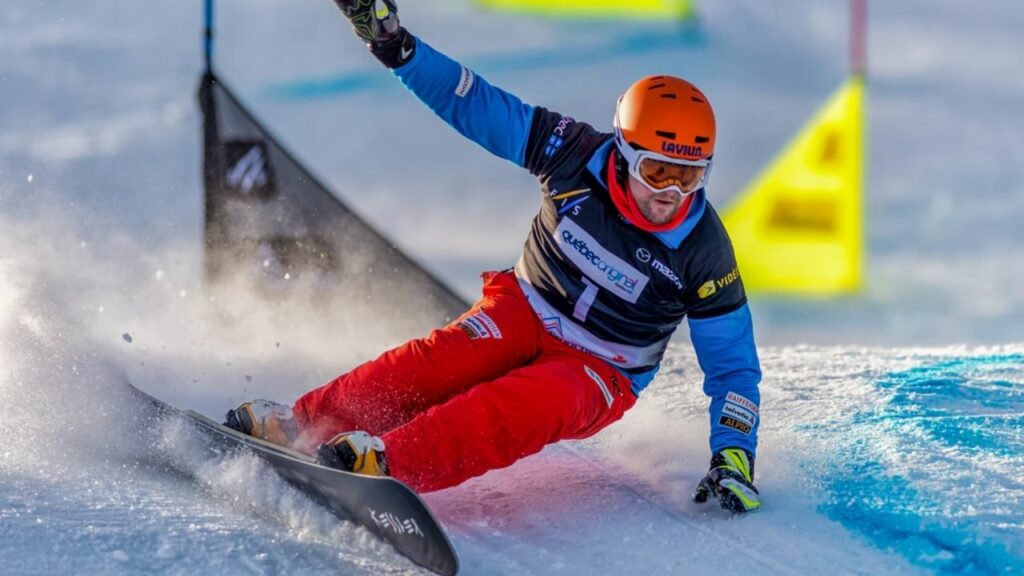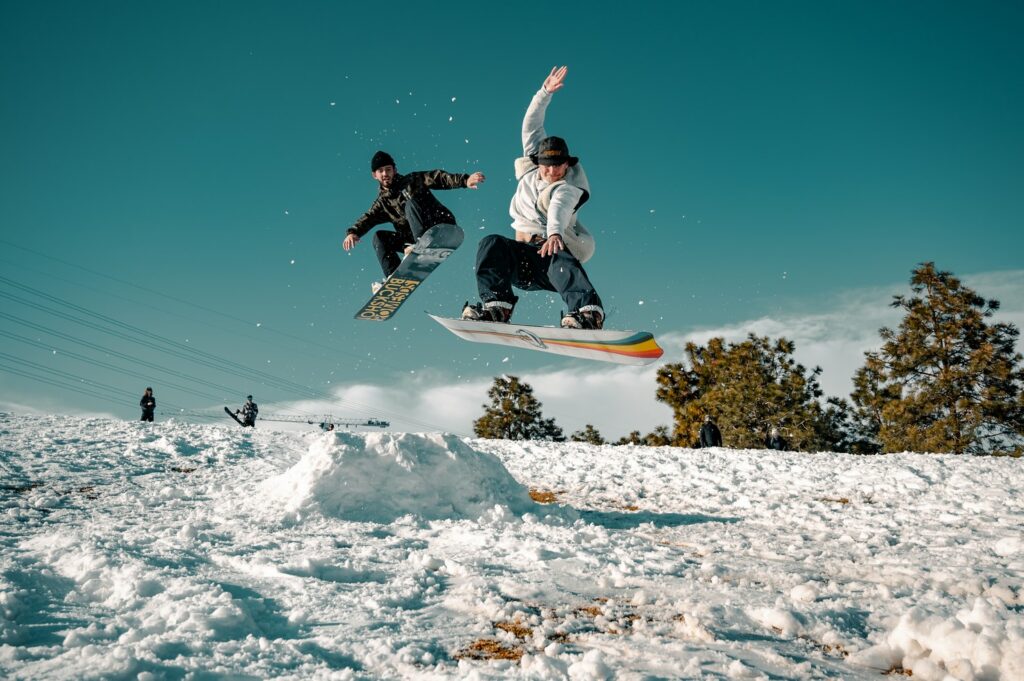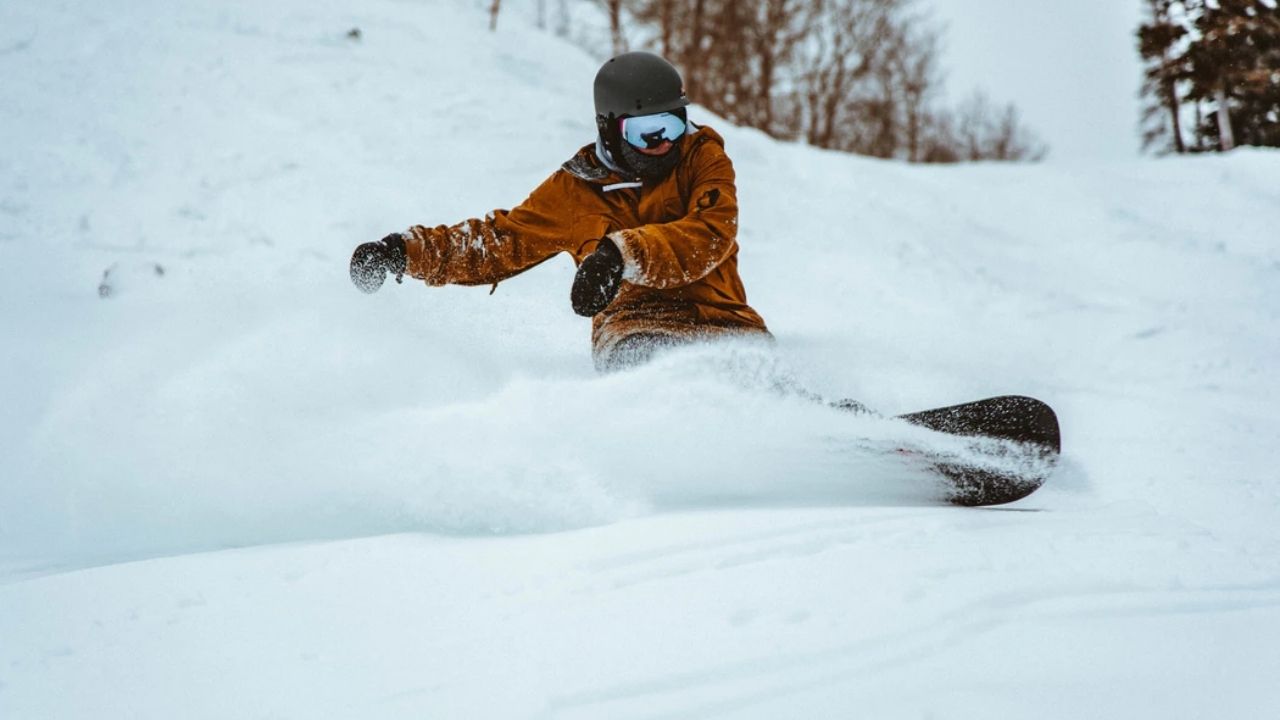Snowboarding isn’t an easy sport to get into. Like skateboarding, your natural sense of balance can get thrown at the beginning.
In skiing, on the other hand, you can position your legs in opposite directions and bend in certain ways to maintain balance. But with snowboarding, both your legs are stuck on a straight board.
On the upside, snowboarding has a steep learning curve. Once you learn to balance and master the fundamentals, you can quickly move up the ladder. And the more you practice, the easier it becomes and the better you get.
I’ve prepared this guide for beginners who want to train for their first snowboarding session. Or, if you need a quick refresher on the basics from last season.
What training is needed for snowboarding?
Before we begin the exercises, keep two rules in mind. First, warm up for at least 5-10 minutes before every workout session.
During the first few days, the goal is to establish your body’s physical capacity and work towards overcoming it.
1. Boot Camp Training for Strength, Stamina, and Endurance
The first stage of your training is essentially a boot camp. This full-body workout regimen is good for developing your entire body uniformly without using weights (dumbells/barbells).
Do 3 sets of each of all the exercises mentioned below:
- Start with squats and jumping squats and follow up with lunges and weighted lunges.
- Do 15 reps of hollow hold and superman for 2-5 seconds each.
- Next, sustain plank position for 15 seconds to a minute.
- Follow up with 10-20 reps of push-ups and wide push-ups. Stop at 10 if you’re tired so you can finish the regiment.
- End the workout with 10 reps of burpees as rigorously as possible while maintaining good posture.
Increase the reps once it becomes “easy” while keeping sets at 3 only.
2. Exercise to Build Muscles and Control Body
Once you’re done with the boot camp, take a short break. Next, we’ll do exercises to build the secondary muscles required for snowboarding.
Do 3 sets with 10-15 reps each, same as before.
- Squats with Reverse Lunges: Squats are super important in snowboarding – from falling properly to leaning forward and maneuvering. This exercise develops your hamstrings muscles.
- Lateral Ski Jumps: Further develops your quads and hamstrings.
- Hip Roll: Strengthens your hips for better control and balance.
- Plank Hold with Leg Movements: Stabilizes your core and abdomen. And provides upper body strength.
- Calf Raise in Squat Position: develops your calf muscles. And strengthens your shin to give better balance on the knees.
3. Other Sports & Activities
- Go to the gym.
So far, most exercises we’ve covered have focused on building strength and flexibility.
To prepare, consider hitting the gym frequently for some weight training. Focus on your gym strength, endurance, and core.
- Swimming
Swimming is an excellent cardiovascular workout that helps in building plenty of stamina. It’s also a relaxing activity to look forward to.
- Other Board Sports
During summer, enjoy skateboarding, surfing, wakeboarding, or whatever floats your boat. These activities develop and sustain your sense of balance while being on a board. Plus, being on the board is so much more fun than stationary balance exercises.
- Cycling
Outdoor aerobic exercises like cycling and track running build stamina and leg strength. Of course, they can be done on a treadmill. It comes down to a personal choice and outdoor climate.
What muscles does snowboarding use?
Snowboarding mainly focuses on your abdomen, core, and legs (thighs and calves). The next most important muscles are the glutes, quads, and hamstrings. Mountain snowboarding works out every muscle, including your back, chest, and arms (shoulders, biceps, triceps).

Here’s what your training regiment should focus on:
- Increasing stamina and building strength
- Mastering bodily balance for safety and good maneuverability
- Preparing your body for the intense activity
What are the most common injuries in snowboarding?
Knee and other Anterior Cruciate Ligament (ACL)injuries are the most common in snowboarding. They’re followed by shoulder, clavicle, head, face, and lower back injuries, respectively, in terms of frequency among snowboarders, especially beginners.
Keep these in mind to avoid injuries during training:
- Always warm up properly before training or snowboarding.
- You must learn how to fall properly to avoid fatal injuries.
- Take a 1.5-minute break after each exercise to give your body some breathing room.
- Don’t overexert your body, especially in the beginning. Tone down the intensity of exercises to gradually build up strength.
- Keep the intensity of cardiovascular exercises higher than usual to build stamina.
You can read more about snowboarding injuries here.
1. How do you fall while snowboarding?
You should remember three things to fall while snowboarding properly. Don’t stick your arms out; keep the legs flexed when falling forward or backward to reduce the risk of arm or ankle injuries. And third, crouch slightly to keep your body low and reduce the impact.
If you have some control when falling, here’s what you do.
When you’re about to fall backward, keep the arms to the front and fall onto your butt. As soon as your butt hits the snow, jump backward to let your back absorb some impact.
When you’re about to fall forwards, make your best efforts to roll over and absorb the impact.
2. How do I improve my snowboard balance?
Using a balance bar is the best and most convenient way of improving your balance on a snowboard. You can purchase a balance board or build one using a piece of wood as it’s essentially a long cuboid.
Other methods of improving balance include balance boards like the Bongo and Vew-Do, Balance Trainers, and Core Stability Disks.

3. How to use a balance bar?
It’s very easy to train with a balance bar. I recommend you start using an old skateboard slate so you don’t wreck your snowboard immediately. After some practice, you can start using a snowboard.
- First, try jumping over the balance bar forward and backward.
- After getting accustomed to hopping, start jumping onto the balance bar and doing 50-50s. It may be difficult in the beginning but aim for completing a dozen without faltering.
- Next, try a 50-50 boardslide forward and backward.
- Finish the training with 50-50 lipslide forward and backward.
How quickly can you learn to snowboard?
The learning curve of snowboarding is different for everyone as it’s dependent on age, current strength & stamina, athletic ability, and mental fortitude. Based on your traits, learning snowboarding can take anywhere from 2 weeks to one season (six months).
It’s vital to get in basic shape so you can take the challenge head-on. The sport might even seem easy if you have good leg strength, core strength, and basic stamina.
That said, it can take up to six to eight weeks of continuous and diligent training to get into shape for snowboarding. During this period, you should work on breaking and strengthening both active and passive muscles that are important for snowboarding.
1. Can you self-teach snowboarding?
Snowboarding is a difficult sport for beginners. It’s quite hard to self-teach but not entirely impossible. You can learn to snowboard by yourself with diligent training and workout. Previous skateboarding or wakeboarding experience is helpful.
2. Do you lean forward or backward while snowboarding?
Leaning in snowboarding refers to the division of weight towards forwarding or backward foot.
You should always lean on your forward foot while snowboarding for ruddering efficiently. Learning backward is a basic human instinct, but you must overcome that with practice.
3. How can I practice snowboarding at home?
You can learn (even master) some of the fundamental snowboarding skills at home. It’ll come in handy once you begin snowboarding during the winters. Use a training board or a proper snowboard for learning the basics.
- Strap one foot onto the board and try to move around. Start slow before gradually increasing the speed.
- Try to walk straight with the snowboard sideways on the strapped foot. Learning how to walk with one foot sideways is important for uphill walking.
- Strap the other foot in and try to shift your balance around without changing the spot you’re standing on. Learning subtle shifts helps you steer your board on the slopes.
- Master rolling over with both feet strapped.
- Try to learn to balance on your heels and toes. Both are important for different reasons.
- Do hop turns by slowly hopping and changing directions. You basically rotate 360 degrees during training without changing the spot.

